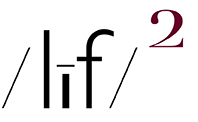“In photographing dwarfs, you don’t get majesty and beauty. You get dwarfs.” ~ Susan Sontag
Continuing with my thoughts on photography’s inability to convey meaning(s) or a true sense of place (amongst other such considerations), I offer for your consideration the Sontag quote about photographing dwarfs.
I agree with that concept but would also add that in photographing dwarfs, you “get” not only dwarfs, you also get a photograph of a dwarf(s). Ya know, a picture which illustrates what a specific dwarf looks like when photographed by a photographer at a specific point in time and from a particular POV-both literally and figuratively.
And, sure, sure…a photographer can employ the tools of the trade, his/her unique manner of seeing, and prop and posing, aka: theatrics sensibilities, to create a photograph of a dwarf who appears to project air of majesty and/or beauty, but, any intended (by the picture maker) meaning(s) to be gleaned from the picture is as Sontag suggests:
[an] “inexhaustible invitations to deduction, speculation, and fantasy”
Be that as it may, or, make of it what you will, forgive me if you feel that I am flogging a dead horse. But, in my defense, re: my curiosity, can a photograph have narrowly defined, unambiguous embedded meaning?, I have been revisiting a number of my photo books-individual photographer monographs-in a effort to discover what,if any, meaning I can glean from the viewing of a wide variety-personal vision wise-of numerous bodies of work.
What I have discovered is that my native and initial reaction to the viewing of a photograph is to see it as a photograph. That is, to consider it it as an object, in and of itself. An object which presents-in good photographs-interesting / intriguing / engrossing visual form and energy that pricks my eye-not my intellect-and my visual sensibilities. After that initial, spontaneous reaction, then and only then, do I take in what is literally been photographed, aka: the illustrated referent(s) as captured by the picture maker’s gaze.
iMo, if a photographer has extracted engrossing form from the “mere” quotidian world, then he/she has created a really good photograph. That is to write, a visual image that stands on its own as only a photograph can. It don’t need no stinkin’ meaning. Nor, I might add, it don’t need no 1,000 words. Ya just gotta see it and feel it.
FYI, writing of “1,000” words, it is customary (and predictable) that every photo monograph contain at least 1,000 words (or many more). Forwards, introductions, and essays give a viewer much run-at-the-mouth ideas about the work; historic and medium references, purported meaning(s), and suppositions about the photographer’s methodology and intent, ad nauseam.
In the case of Terry Fake’s book / photographs (as is the case in every photo book I view), I looked at the pictures before I read the commentary. That’s cuz I also agree with Sontags’s idea that….
“Interpretation is the revenge of the intellect upon art.”
…. and sliding down the rabbit hole of interpretation, more often than not, sucks the life out of a photograph (or any work of Art). Although, to be fair, I do on rare occasion find a kernel or 2 of insight that might add a smidgen of additional appreciation to body of work.
BTW, one of my favorite monographs is Mark Wise 18 Landscapes. That’s cuz: a) I like the work, and, b) the only words in the book are Mark Wise 18 Landscapes, as seen on the title page. That’s it. No words, not even a title or artist name on the front or back cover. One picture per spread on the right page, left page blank. No picture titles or captions. Last page has copyright info printed in minuscule 6pt type centered on an otherwise blank page.
My kinda book. Figure it out / experience / enjoy it for yourself and let the art commentariat go pound salt.
